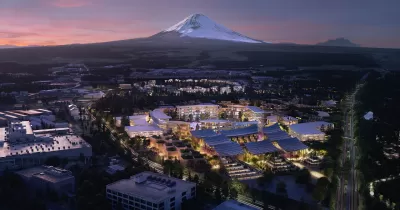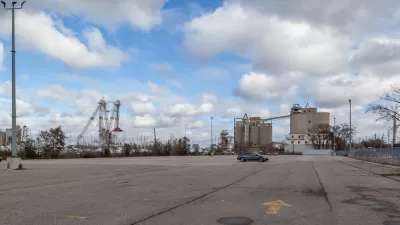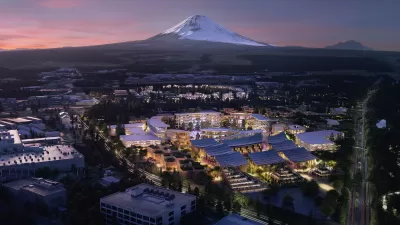Checking in with Toyota's plans for an interconnected smart "city of the future" means considering how their approach might differ from other attempts at similar projects.

Corporate interest in smart city technology has brought numerous concepts and potential projects into the public spotlight in recent years with a notable lack of success in implementing new technologies in a robust way. Where others (most notably, Sidewalk Labs) have failed, Toyota has big plans to create a new, interconnected smart city, a "city of the future" to stand as a proof of concept for such innovations as autonomous vehicles and smart houses.
"The 175-acre Woven City project, to sit at the base of Mt. Fuji, would house some 2,000 residents and will be outfitted with connected infrastructure, clean buildings and artificial intelligence (AI)," writes Jason Plautz on the ambitious scope of the project. Some onlookers think that Toyota could have more success than other corporations who have spearheaded smart city development, in part due to the lessened regulatory requirement involved in building a city from scratch.
Public concern has put a damper on smart city development projects in the past. Alphabet's Sidewalk Labs planned a development on the waterfront of Toronto that sought to "showcase everything from mass timber buildings to adaptive pavement that would accommodate all forms of mobility," but the "project was dogged with concerns about how the company would store and protect data collected from residents," Plautz reflects.
After Toyota's January announcement of plans for the spawning of the Woven City, very few details about the project have been revealed, says Plautz. Nearly a year later, ears are perked for more information about the viability of the project and its implications for smart city technology in other cities worldwide.
FULL STORY: Can Toyota succeed where Sidewalk Labs failed?

Alabama: Trump Terminates Settlements for Black Communities Harmed By Raw Sewage
Trump deemed the landmark civil rights agreement “illegal DEI and environmental justice policy.”

Study: Maui’s Plan to Convert Vacation Rentals to Long-Term Housing Could Cause Nearly $1 Billion Economic Loss
The plan would reduce visitor accommodation by 25% resulting in 1,900 jobs lost.

Why Should We Subsidize Public Transportation?
Many public transit agencies face financial stress due to rising costs, declining fare revenue, and declining subsidies. Transit advocates must provide a strong business case for increasing public transit funding.

Paris Bike Boom Leads to Steep Drop in Air Pollution
The French city’s air quality has improved dramatically in the past 20 years, coinciding with a growth in cycling.

Why Housing Costs More to Build in California Than in Texas
Hard costs like labor and materials combined with ‘soft’ costs such as permitting make building in the San Francisco Bay Area almost three times as costly as in Texas cities.

San Diego County Sees a Rise in Urban Coyotes
San Diego County experiences a rise in urban coyotes, as sightings become prevalent throughout its urban neighbourhoods and surrounding areas.
Urban Design for Planners 1: Software Tools
This six-course series explores essential urban design concepts using open source software and equips planners with the tools they need to participate fully in the urban design process.
Planning for Universal Design
Learn the tools for implementing Universal Design in planning regulations.
Smith Gee Studio
Alamo Area Metropolitan Planning Organization
City of Santa Clarita
Institute for Housing and Urban Development Studies (IHS)
City of Grandview
Harvard GSD Executive Education
Toledo-Lucas County Plan Commissions
Salt Lake City
NYU Wagner Graduate School of Public Service




























